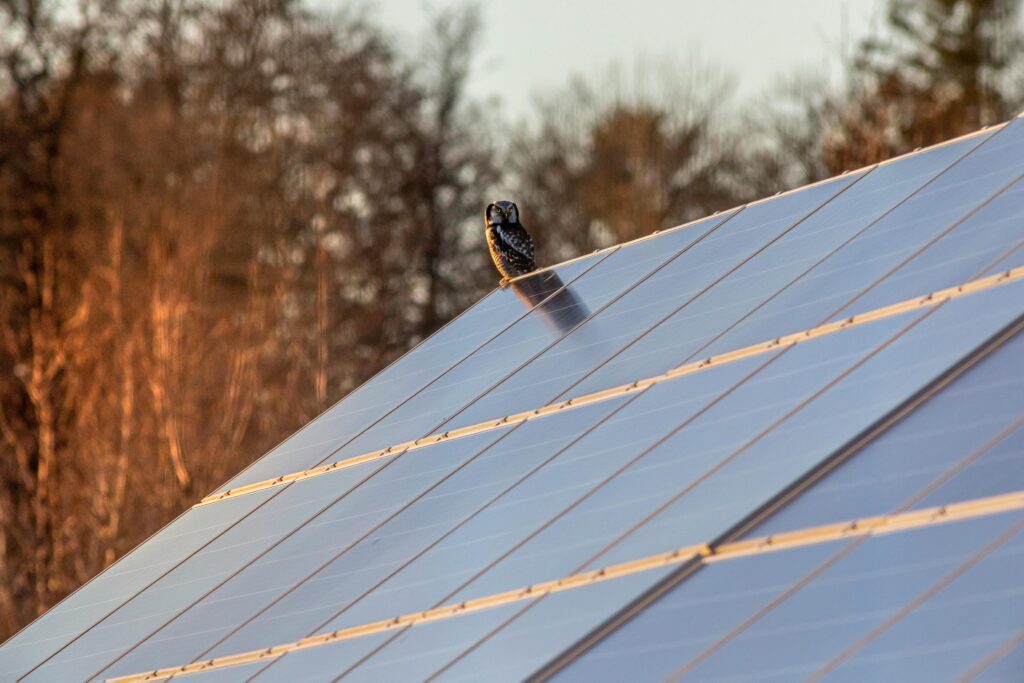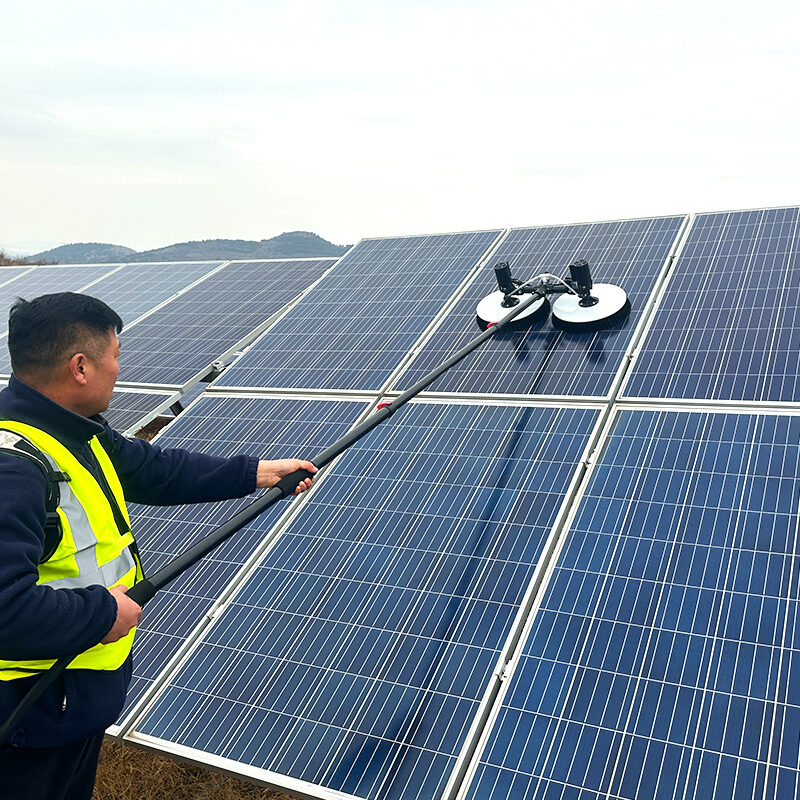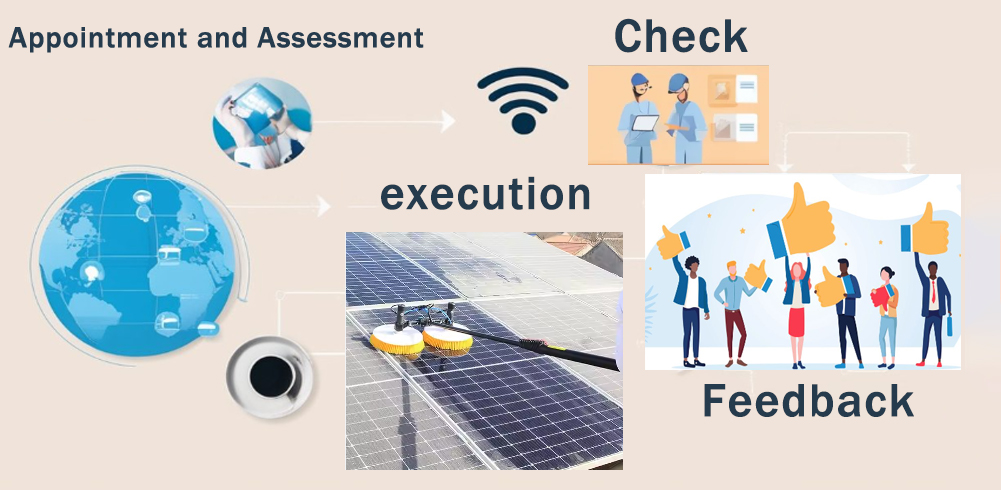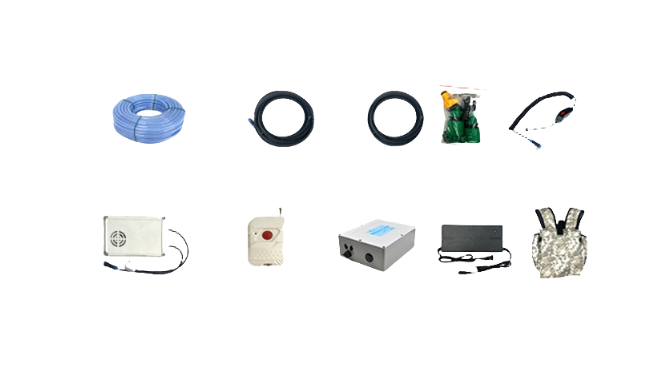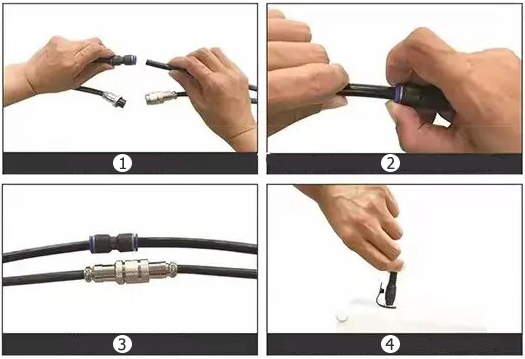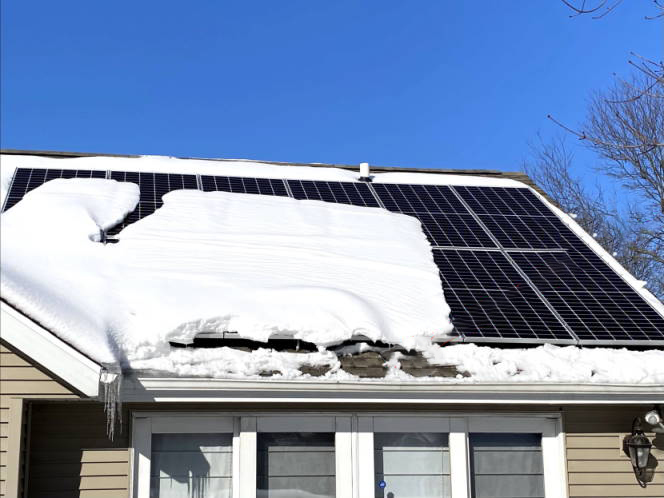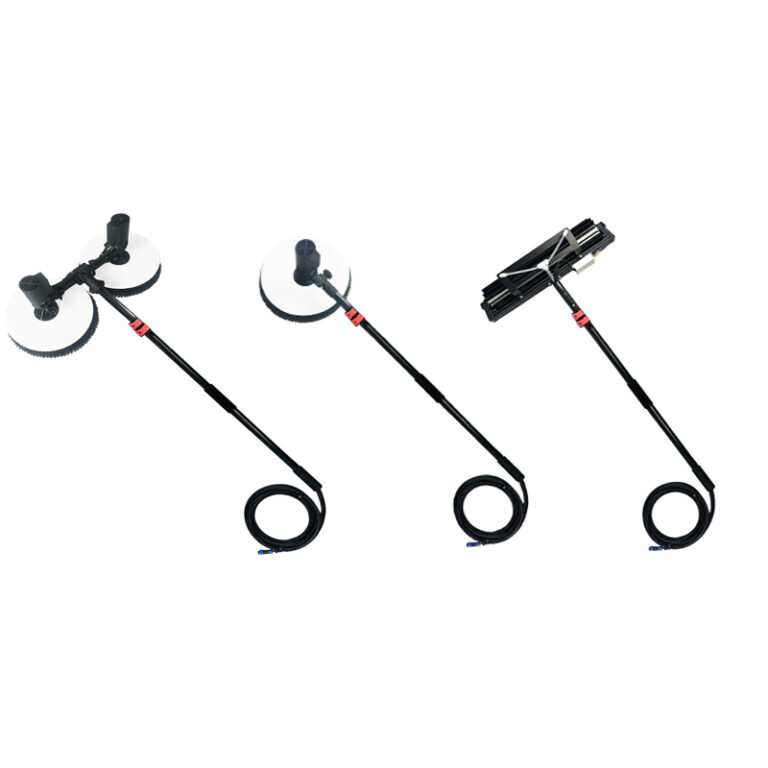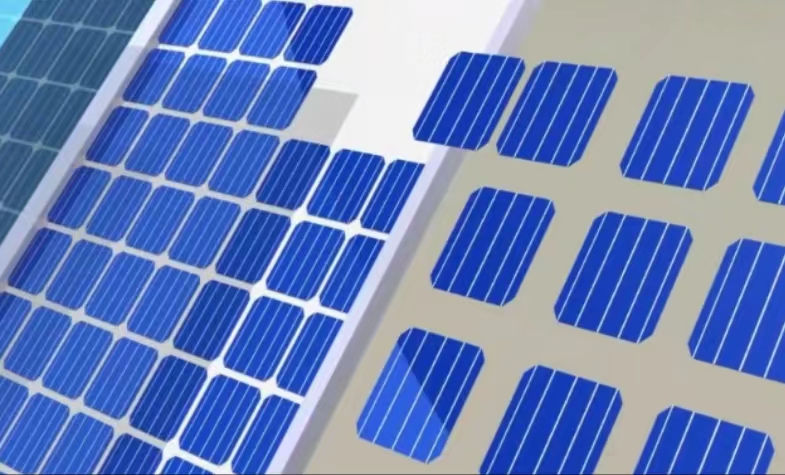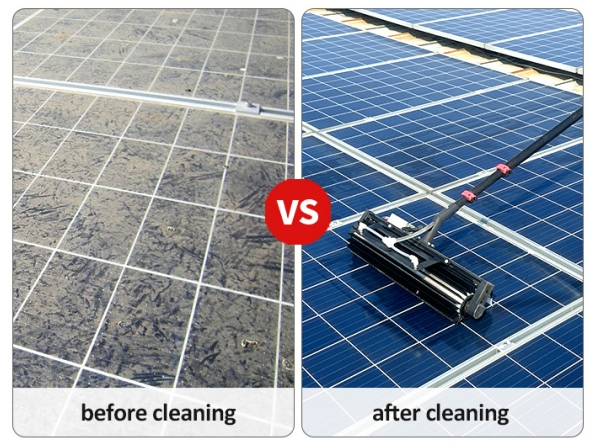5 Minutes to Clean Your Solar Panels
Using solar panels in homes and businesses is an excellent investment, as they help save on energy costs while reducing carbon emissions. However, if they are used continuously without being cleaned, the accumulation of dust, dirt, pollen, and bird droppings on the surface can reduce their efficiency. But now that you’ve read this article, you can quickly and effectively clean your solar panels in just 5 minutes! Here are the specific steps.

Prepare the following tools:
A soft brush or sponge
A hose with a spray nozzle (or a large bucket)
Mild soap solution
A squeegee (optional if you don’t mind leaving marks on the panels)
- Ensure your safety (1 minute)
Turn off the solar panel system. If your panels are installed on the roof, prepare a sturdy ladder and consider wearing a safety harness and helmet. It is recommended to clean the panels when there is no sunlight to avoid streaks after cleaning.
- Rinse the solar panels with a hose (1 minute)
Use the hose to rinse off any suspended dirt on the surface. If a hose is unavailable, use water from a bucket to rinse.
- Gently scrub (2 minutes)
Soak a soft brush or sponge in soapy water. Gently wipe the panels with the soaked sponge to avoid scratches. Focus on cleaning stubborn stains.
- Rinse again (30 seconds) Spray with clean water to remove any remaining soap or dirt.
- Drying (30 seconds): Use a squeegee or allow the panel to air dry naturally. Ensure that all soap residue is thoroughly rinsed off, as any remaining traces may remain on the solar panel and affect its efficiency.
If your panels are difficult to access, you may wish to perform a light cleaning once a week to prevent dirt buildup. Avoid using high-pressure washers, as they may damage the panels. This solar panel cleaning brush may be the solution for you—click here to view.


 Eliminate bird droppings: High-powered brushes remove all traces and unpleasant odors, breaking habits-just like how a solar panel cleaner solution removes stubborn dirt while protecting surfaces.
Eliminate bird droppings: High-powered brushes remove all traces and unpleasant odors, breaking habits-just like how a solar panel cleaner solution removes stubborn dirt while protecting surfaces.